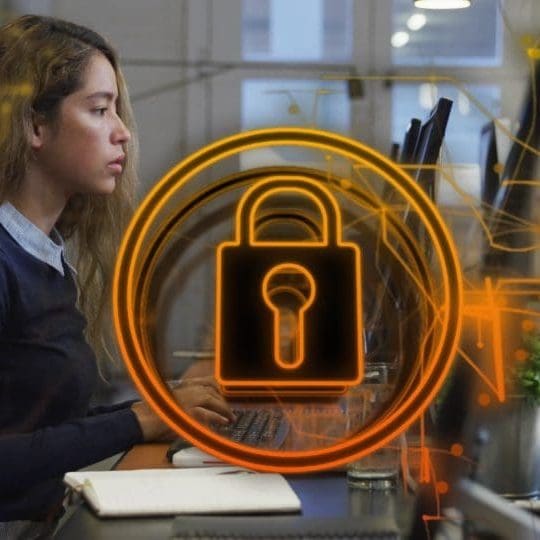Physical Security in UK Data Centres: Beyond Firewalls and Encryption
When most people think about server security, their minds jump to firewalls, antivirus software, or encryption. But the truth is that physical security is just as important as digital defences. After all, servers are still physical machines—and if unauthorised individuals gain access to them, no amount of encryption will keep your data safe.
UK data centres are among the most secure facilities in the world. From biometric scanners and CCTV to fire suppression systems and armed guards, these sites are built like fortresses. In this article, we’ll explore the layers of physical security in UK data centres, why they matter, and how leading providers keep your business safe.
🏢 Why Physical Security Matters
Servers hold the lifeblood of businesses—customer records, financial data, intellectual property, and critical applications. A single physical breach could lead to:
- Theft of sensitive data
- Service disruption or downtime
- Hardware tampering (e.g., installing malicious devices)
- Permanent damage from sabotage or fire
In 2018, a European data centre (outside the UK) was physically breached. Attackers gained entry through poor access control and walked away with hard drives containing thousands of customer records. The incident cost the operator millions in lost contracts and trust.
This case highlighted a critical truth: even the best cybersecurity tools can’t protect a server that someone can walk up to and unplug.
🔒 Layers of Physical Security in UK Data Centres
UK Tier III and Tier IV data centres use a multi-layered security model. Each layer reduces the chance of unauthorised access or environmental threats.
1. Perimeter Security
- Fencing, secure gates, and anti-vehicle barriers
- 24/7 armed or trained security guards
- Visitor screening before entering the facility
2. Access Controls
- Biometric scanners (fingerprint, retina, or palm-vein recognition)
- Keycard or fob access with time restrictions
- Mantraps—double-entry doors preventing tailgating
3. Surveillance
- CCTV covering every entry point, aisle, and rack row
- Motion sensors in restricted areas
- Continuous monitoring by security staff
4. Server Room Protection
- Locked racks—customers can only access their own servers
- Individual cages for dedicated space clients
- Security logging every rack access attempt
5. Environmental Security
- Fire suppression systems (inert gas instead of water)
- Redundant cooling to prevent overheating
- Seismic reinforcements in vulnerable areas
🛡️ Case Study: Telehouse London Docklands
Telehouse London, often called the most connected building in Europe, is a prime example of UK physical security. Their Docklands site hosts over 500 carriers and ISPs.
- 24/7 security staff patrol the premises.
- Biometric and mantrap entry is required for server rooms.
- Tier III+ resilience ensures power and cooling redundancy.
- Customer cages provide isolated spaces for tenants.
This level of protection makes Telehouse a trusted choice for financial institutions and enterprises where downtime isn’t an option.
🏢 UK Providers With Exceptional Physical Security
- Digital Realty London – Tier III+ facilities with biometric access, CCTV, and advanced fire suppression systems.
- Equinix UK – Multiple sites across London and Manchester, offering ISO 27001-certified physical and digital protections.
- Pulsant – A nationwide network of secure facilities, many trusted by public sector organisations.
- Telehouse Docklands – World-renowned for physical security and connectivity, home to thousands of businesses.
📊 The Standards That Matter
Reputable UK data centres follow internationally recognised standards:
- ISO 27001 – Information security management.
- ISO 22301 – Business continuity management.
- PCI DSS – For facilities hosting payment card data.
- Uptime Institute Tier Certification – Tier III or Tier IV for resilience.
These certifications prove that the data centre’s physical and operational security has been independently audited.
✅ What Businesses Should Look For
If you’re considering colocation, dedicated servers, or cloud hosting in the UK, ask your provider:
- Do you use biometric and mantrap access?
- Are security staff on-site 24/7?
- What fire suppression systems are in place?
- Do you provide audit logs of physical access?
- Which certifications do your facilities hold?
🔮 The Future of Physical Security in UK Data Centres
As threats evolve, physical security is also advancing:
- AI-powered surveillance: Detecting unusual behaviour in real time.
- Robotic patrols: Automated security robots are being trialled.
- Smart locks and IoT sensors: For tighter rack-level access control.
With quantum computing on the horizon, digital security is under pressure. But physical protections will remain critical, ensuring the infrastructure that supports digital defences stays safe.
🎯 Conclusion
Physical security in UK data centres is more than just locked doors and CCTV cameras. It’s a multi-layered defence system designed to stop everything from intruders and theft to fire and environmental hazards.
Leading providers like Telehouse, Equinix, Pulsant, and Digital Realty set the gold standard, combining 24/7 monitoring with biometric access, environmental safeguards, and ISO certifications.
For businesses, choosing a provider with robust physical security isn’t just about compliance—it’s about trust. Your servers are only as secure as the building they live in.
Bottom line: Digital firewalls protect data, but physical fortresses protect the servers themselves.

